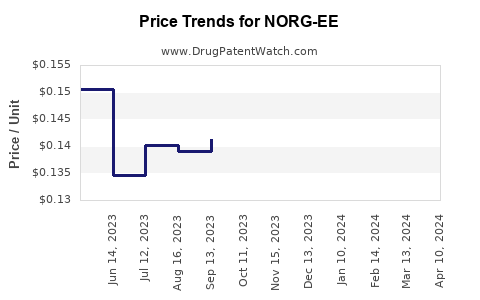Drug Price Trends for NORG-EE
✉ Email this page to a colleague

Average Pharmacy Cost for NORG-EE
| Drug Name | NDC | Price/Unit ($) | Unit | Date |
|---|---|---|---|---|
| NORG-EE 0.18-0.215-0.25/0.035 | 68462-0565-84 | 0.11796 | EACH | 2024-11-20 |
| NORG-EE 0.18-0.215-0.25/0.035 | 68462-0565-29 | 0.11796 | EACH | 2024-11-20 |
| NORG-EE 0.18-0.215-0.25/0.035 | 68180-0838-71 | 0.11796 | EACH | 2024-11-20 |
| NORG-EE 0.18-0.215-0.25/0.035 | 68180-0838-73 | 0.11796 | EACH | 2024-11-20 |
| NORG-EE 0.18-0.215-0.25/0.035 | 68462-0565-29 | 0.13732 | EACH | 2024-10-23 |
| NORG-EE 0.18-0.215-0.25/0.035 | 68180-0838-71 | 0.13732 | EACH | 2024-10-23 |
| >Drug Name | >NDC | >Price/Unit ($) | >Unit | >Date |


